Views over Hollingbury Industrial Estate 1952-1987
Manufacturing Entity
Call me sad if you want, but I find these photographic views over Hollingbury Industrial Estate fascinating; from its infancy in 1952 until the start of its demise as a manufacturing entity around 1987.
1952
The new CVA No 2 factory soon after completion in 1952. To the right is the Pullers Instruments factory completed in 1951, and on the left KDL Precision Engineers completed in 1950. The land behind CVA became a park, but was “swallowed up” by the industrial estate in 1966.
1958
The construction of the huge CVA No 6 factory is underway, and to the right further building work on the rear of the Leytool factory. In the distance, open land where the ill fated Patcham Fawcett School was built in the mid 1960’s.
1964
Seen behind the chimney in the foreground, the extension to the Leytool factory from the previous photo is now complete. The shape of the cars parked in Crowhurst Road, also confirm that it’s early 1960’s.
1966
From Martin Nimmo’s collection on a previous page, this photo is dated as c.1960, however I think it’s nearer to 1966. In the far distance I’m sure the buildings of Patcham Fawcett School can be seen, which would date it after 1965, furthermore the No 8 factory extension to the CVA/Kearney & Trecker building is missing, so it would be earlier than 1969. Note the number of cars parked on the roof of the ITT Creed building.
1970
This aerial photo dates from around 1970; the Kearney & Trecker No 8 assembly factory, completed in 1969 can be seen. Furthermore, the name Kearney & Trecker on the front of the building indicates it’s before the merger with Marwin in 1973. Probably the photo was taken to promote the opening of the new factory.
1975
The former KDL Precision Engineers factory built in 1950 central. KDL were bought out by Talbot Tool Company in 1958. The flat roof extension at the rear was built in 1968 on the open land seen in the earlier 1964 photo.
1985
Central, the demolition of the 1950 built Leytonstone Jig & Tool Co (Leytool) factory is complete. Note to the right the huge ITT Creed factory and to the left the KTM factory. In the far distance the Patcham Fawcett School can be seen, and in the foreground the Jotun-Henry Clark paint factory.
1987
The size of the huge STC (ITT Creed) can be appreciated; it was in excess of 190,000 square feet. It was probably the demolition of this, and the Leytool factory, that was the beginner of the demise of the industrial estate as a manufacturing entity.

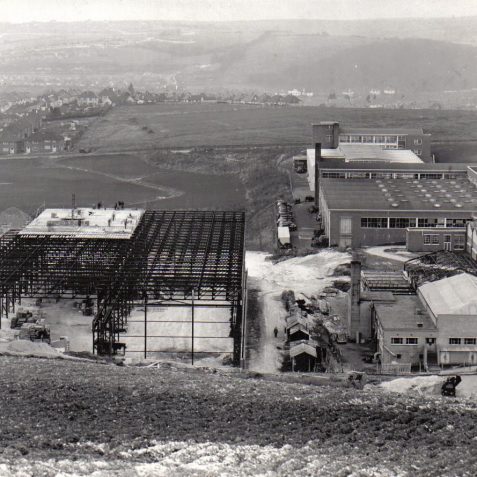
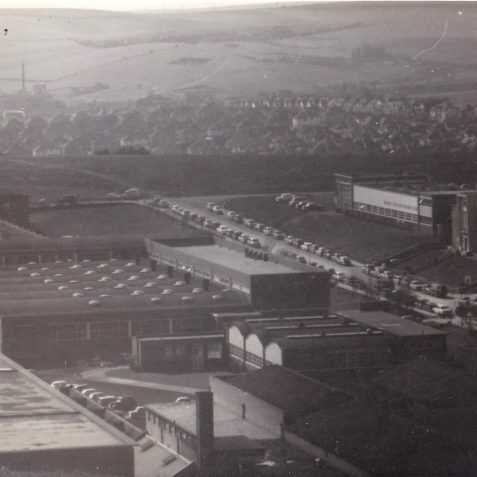

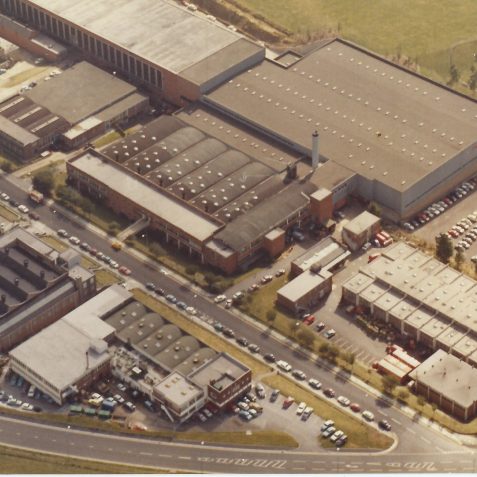

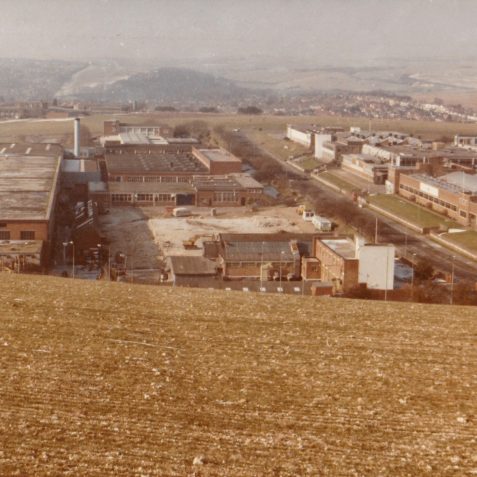
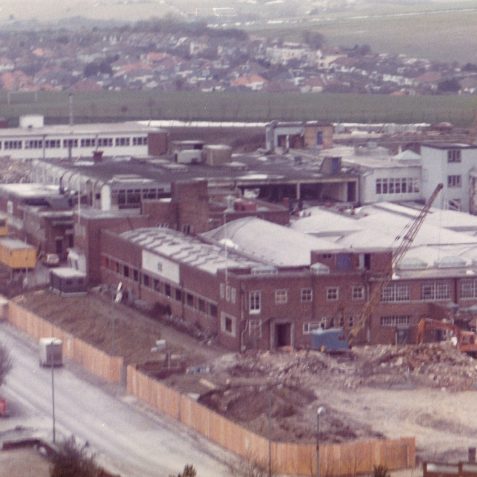




Comments about this page
Anything but sad! As a lecturer in local history, geography and landscape studies at the University of Sussex I am conscious that the rapid pace of post-war industrial change is not adequately recorded and the string of reminiscence that Hollingbury has generated in the past along with these images is invaluable…especially as I am a Hollingbury resident.
Some great photos of the Hollingbury Industrial Estate, Peter; so sad to see it as a retail park selling things employing around 400 people, when in the 1960s & ’70s it employed around 6000 people making things. Back then they used to stagger the finishing times of the various factories so the buses and roads weren’t overwhelmed. Only the Talbot Tool Company is left from those days when Brighton & Hove was called the Coventry of the South.
But technology is the name of the game these days, We therefore still make and develop things, it’s just in a different format, like software, and so the knowledge economy advances, and employs many people. Heavy industry is for other countries, and more polluting!
Stefan, KTM were one of the very first machine tool manufactures to introduce computers to machine tools, around 1975. In the early 1980s they had around 25 software engineers (at a time when most laymen didn’t even know what software was) working at the Hollingbury factory, additionally hundreds of other qualified engineers. Furthermore they trained and employed many hundreds of “skilled tradesmen”! Your “different format” was already being done at that time in Hollingbury, but is not being done now because they “only sell sausages and the like”. The software engineers of today have the software engineers of yesterday to thank for the ground-breaking work carried out at that time. Probably anyone who worked at Creeds of Gross would have a similar argument. The ‘knowledge economy’ does and always will continue to advance. The population of Shenzhen in Southern China (most people have never even heard of it) is around 20,000,000, there are probably more software engineers there than in the whole of the UK. A friend of mine visited Sham Chun Hui (just across the water from Hong Kong) around 1983, he told me it was just a poor scrubby town and had a population of around 30,000 …its now called Shenzhen! Technology was the name of the game back then, but Hollingbury lost out to Margaret Thatcher’s financial and service industry Britain!
Add a comment about this page